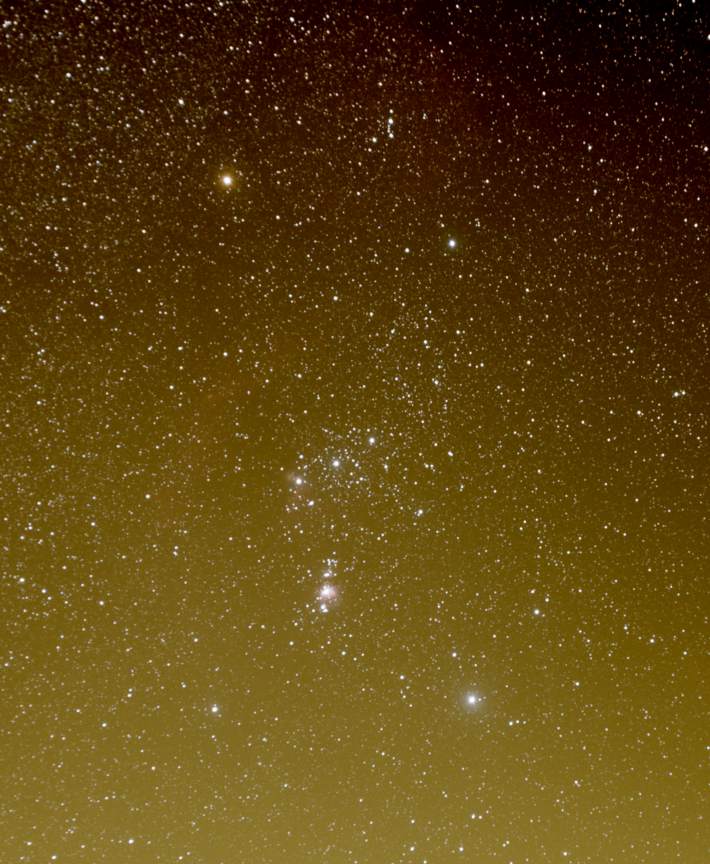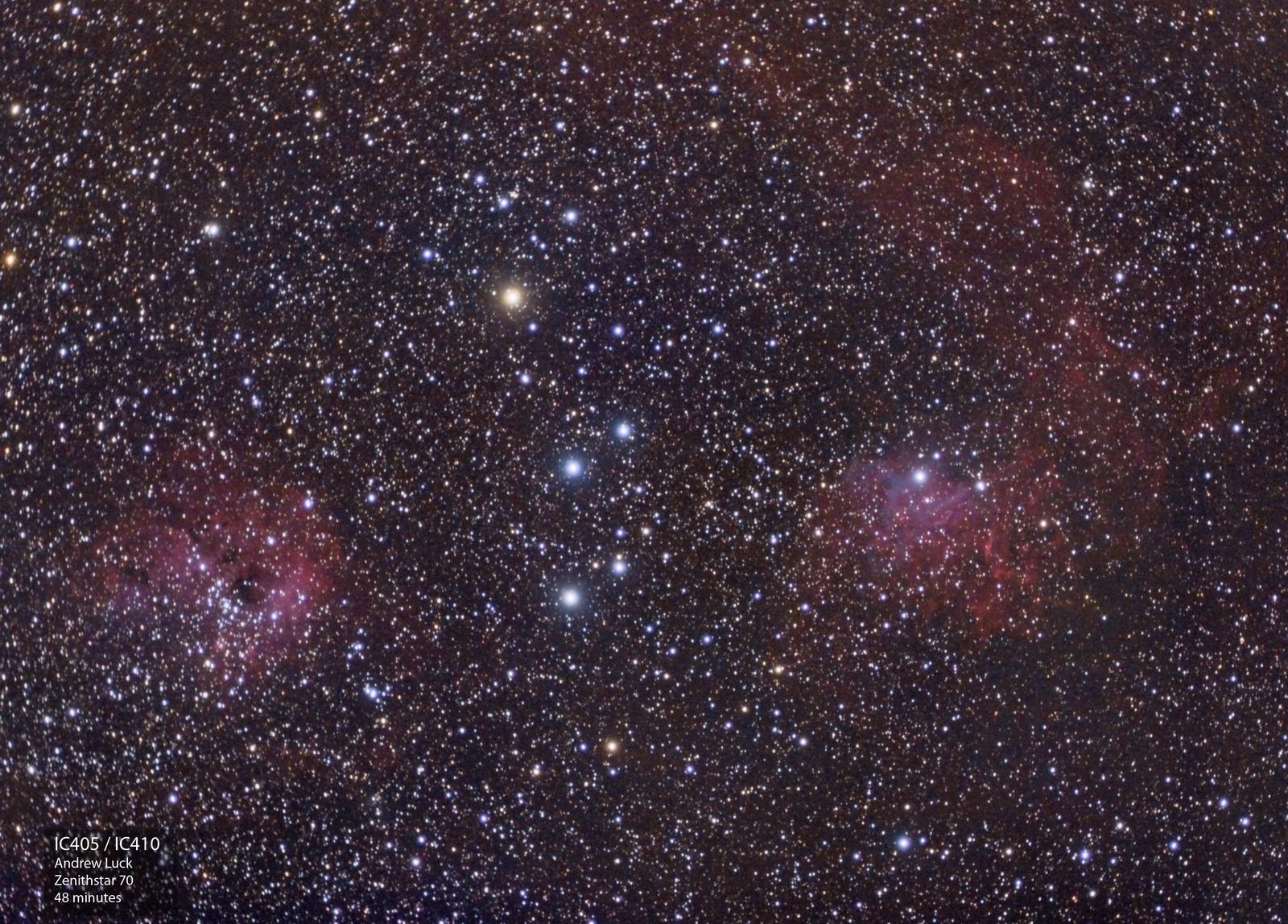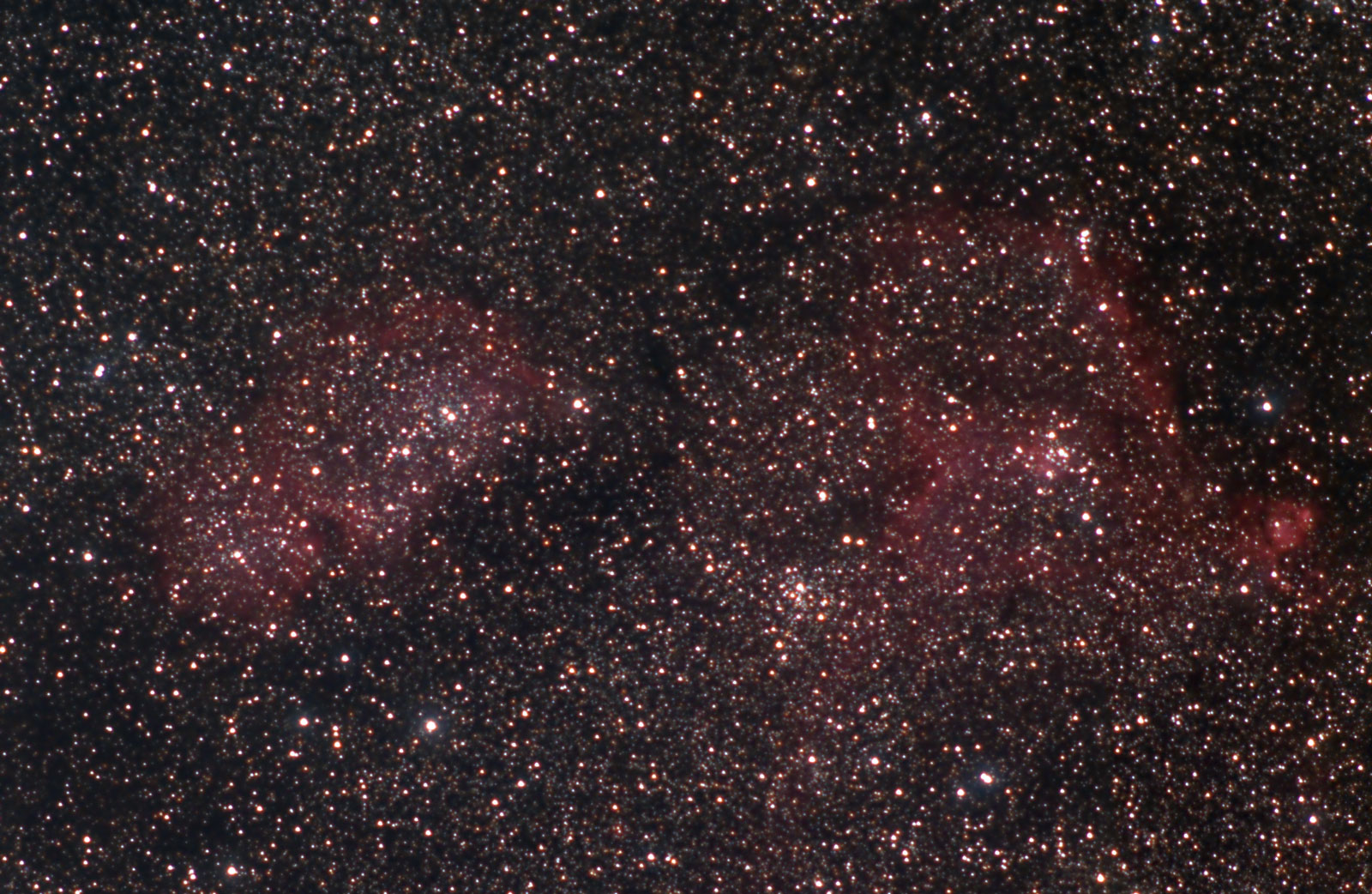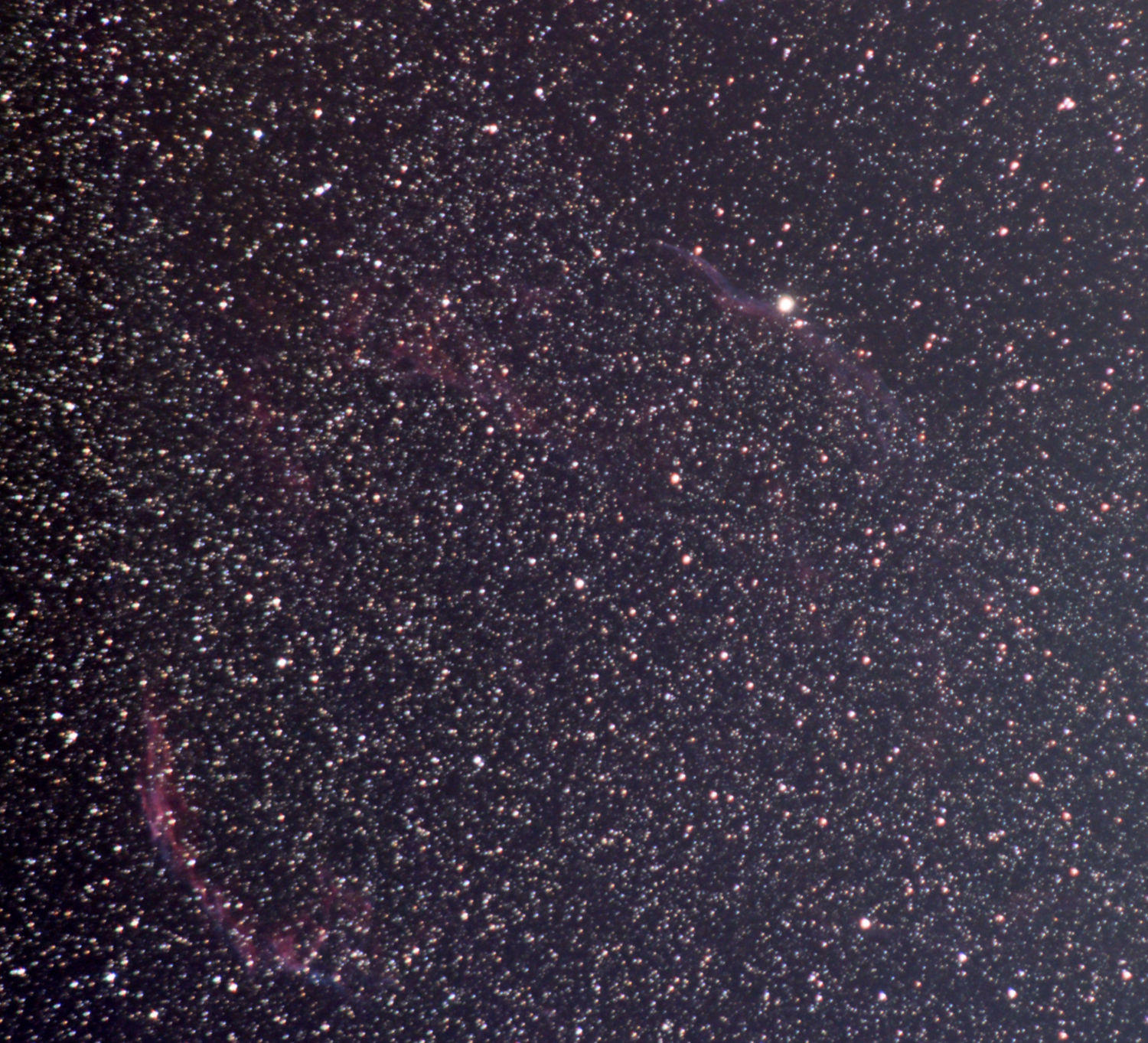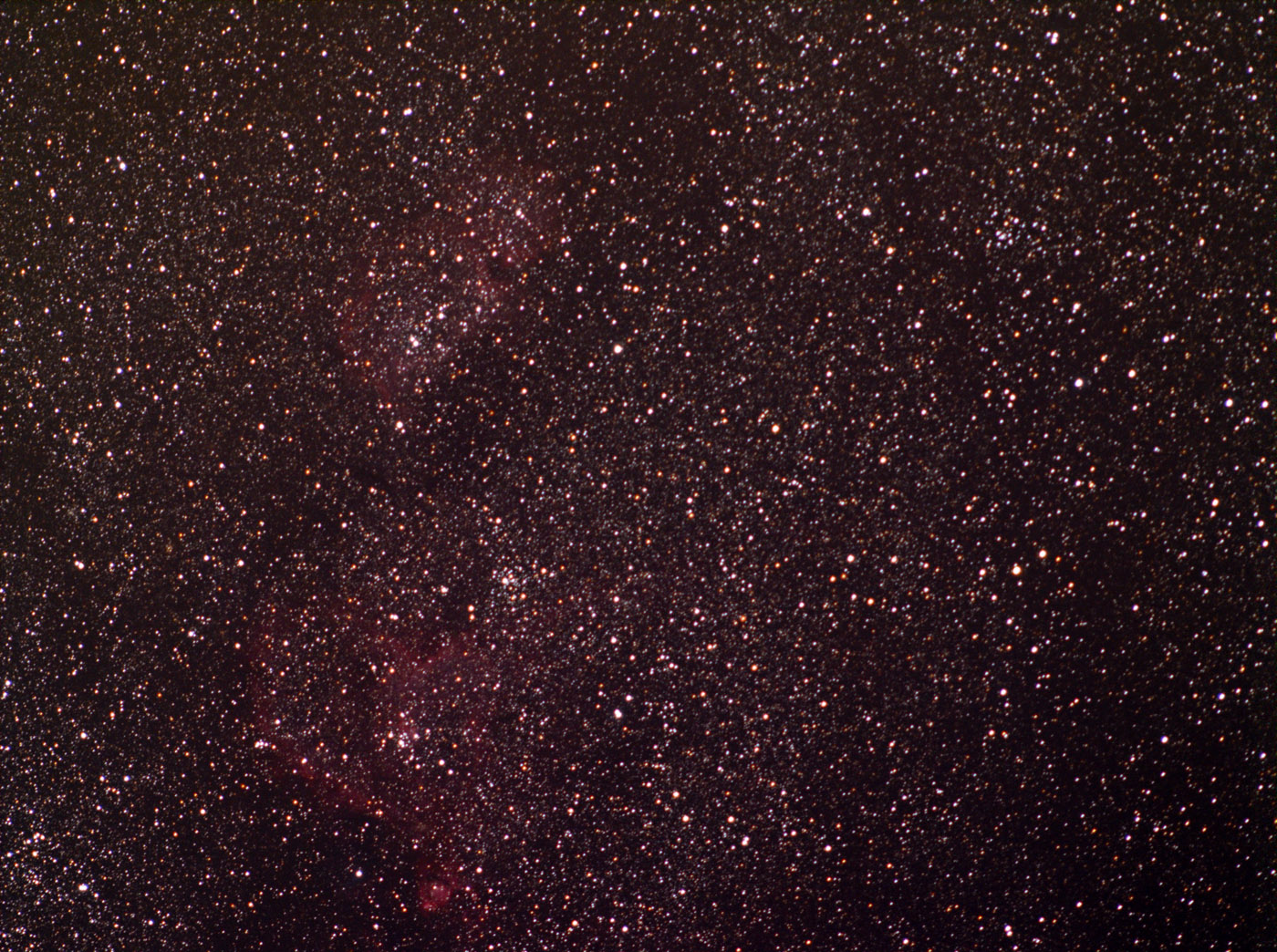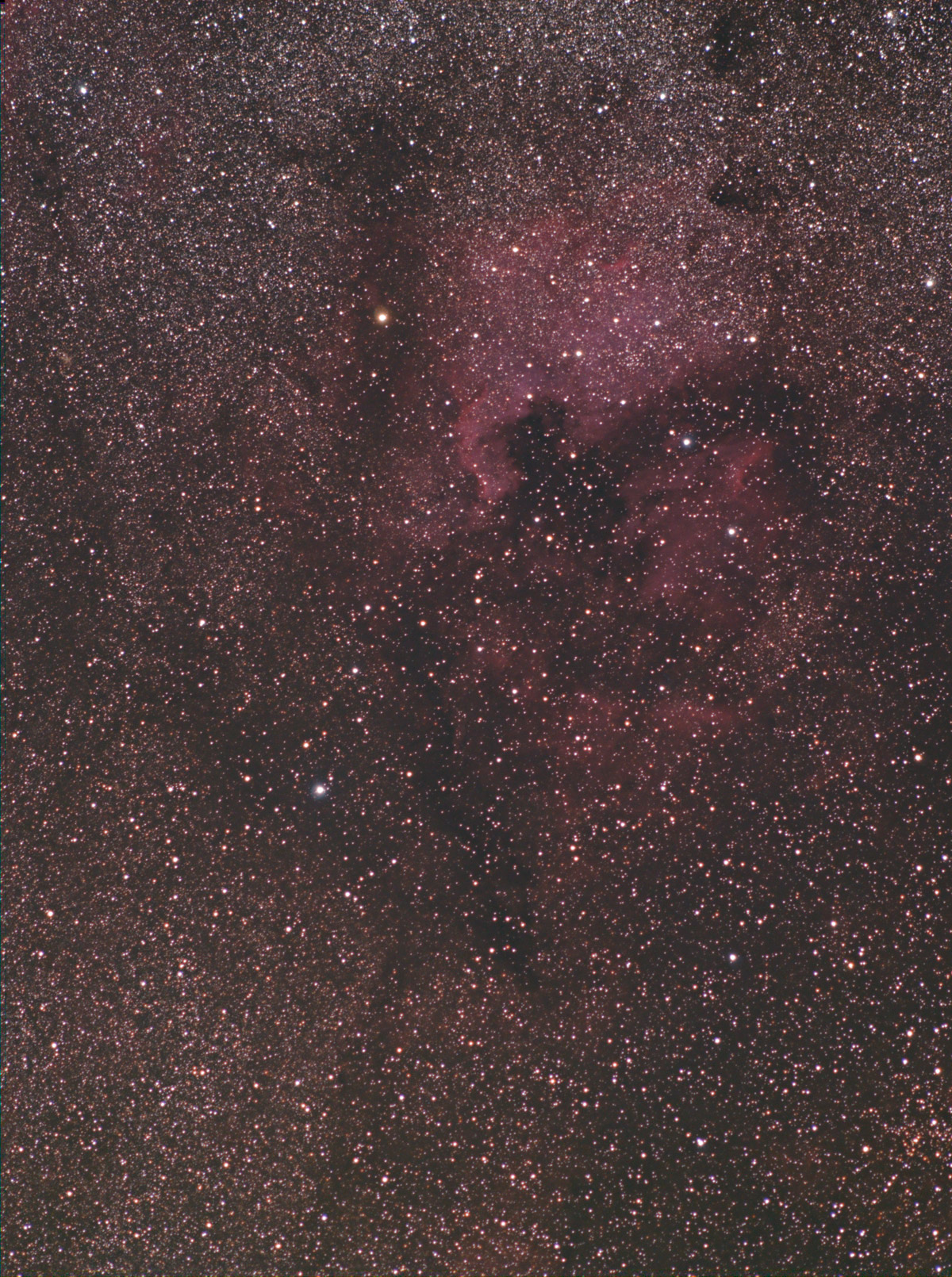We’ve had a few clear intervals over the past couple of weeks and I took some pictures of Orion with my Sigma 10-20mm f/3.5 lens during one of them. I managed an hours worth of 10 minute frames and rejected one for an airplane in the image. After stacking, a simple stretch showed the light pollution that’s in my southern sky from the local town. Limiting magnitude was about 4.8.
Both automatic and dynamic background removal tools were run in Pixinsight. Despite this, some glow remains in the bottom left corner where the gradient was most severe. A star reduction procedure reduced the intensity of the field stars and then the large scale structures were isolated and increased in saturation and lightness to emphasize Barnard’s Loop.
